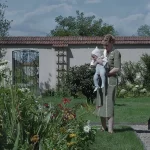23. David Lean
DAVID LEAN
LAWRENCE OF ARABIA, THE BRIDGE ON THE RIVER KWAI, DOCTOR ZHIVAGO, BRIEF ENCOUNTER
To even casual filmgoers — maybe mostly to casual filmgoers — David Lean represents the Platonic ideal of cinematic experience: looming, wider-than-wide screens; vast, exotic vistas; bold historical sweep; dramatic flourish at once flamboyant and understated. Rising from the place of a lowly studio teaboy, Lean would go on to direct the likes of Dr. Zhivago, The Bridge on the River Kwai, and Lawrence of Arabia, earning him a seemingly permanent place on best-director lists both rarefied and populist. At the height of his powers, he knew how to pull off that devilishly difficult filmmakers’s trick of winning both critical and public enthusiasm — with the same pictures.
Lean accomplished this in large part by his inarguable demonstrations of the filmmaker’s craft. If he lacked any element of that craft, it was a sense of humor; most of his pictures seem to betray the unsmiling, near-military sternness collaborators remember him wielding on his shoots. Maybe back then you couldn’t afford to crack a joke when you had to capture the construction of the Burma Railway during World War II, the forbidding expanse of Arabia during World War I, or a whole decade of Russian history that was tumultuous even by Russian history’s highly tumultuous standards. Lean’s seriousness shows through, certainly, but the seriousness of his engagement with cinema glows even brighter.
New Yorker critic Anthony Lane put it best when, on the centenary of Lean’s birth, he wrote that “grandeur is a far from simple blessing, for the filmmaker as for the politician. It is nagged by accusations of bombast and fears of emptiness. Comedy sniggers in its shadows. Yet those who try to brush it away from the history of cinema will find themselves scratching that history beyond repair, because it is in the nature of cinema that, as D. W. Griffith knew from the start, we like to look up to the grand — to men and women magnified onto a screen that starts at the height of an altar and stretches upward from there.”
See the full list HERE.





























